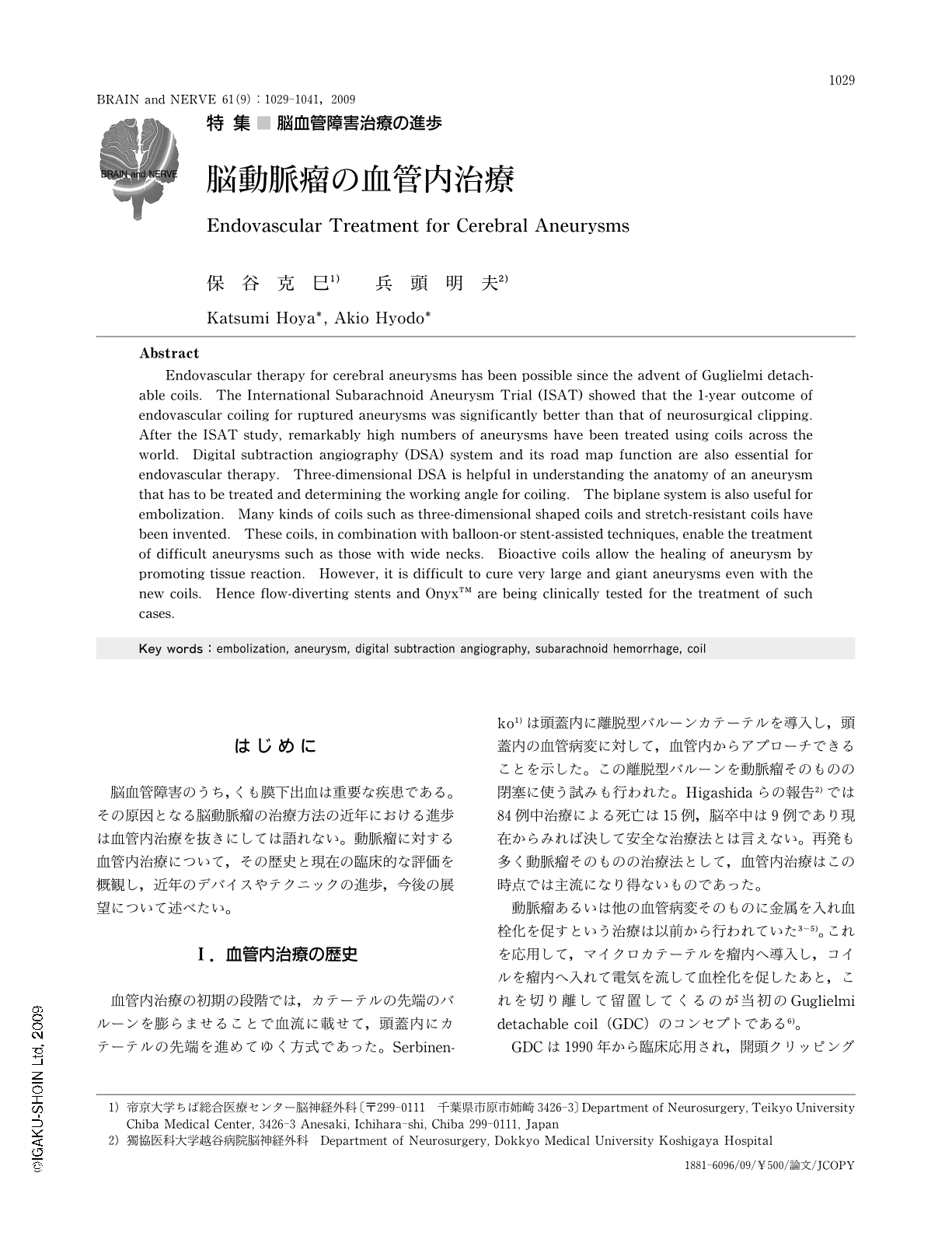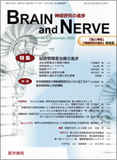Japanese
English
- 有料閲覧
- Abstract 文献概要
- 1ページ目 Look Inside
- 参考文献 Reference
はじめに
脳血管障害のうち,くも膜下出血は重要な疾患である。その原因となる脳動脈瘤の治療方法の近年における進歩は血管内治療を抜きにしては語れない。動脈瘤に対する血管内治療について,その歴史と現在の臨床的な評価を概観し,近年のデバイスやテクニックの進歩,今後の展望について述べたい。
Abstract
Endovascular therapy for cerebral aneurysms has been possible since the advent of Guglielmi detachable coils. The International Subarachnoid Aneurysm Trial (ISAT) showed that the 1-year outcome of endovascular coiling for ruptured aneurysms was significantly better than that of neurosurgical clipping. After the ISAT study,remarkably high numbers of aneurysms have been treated using coils across the world. Digital subtraction angiography (DSA) system and its road map function are also essential for endovascular therapy. Three-dimensional DSA is helpful in understanding the anatomy of an aneurysm that has to be treated and determining the working angle for coiling. The biplane system is also useful for embolization. Many kinds of coils such as three-dimensional shaped coils and stretch-resistant coils have been invented. These coils,in combination with balloon-or stent-assisted techniques,enable the treatment of difficult aneurysms such as those with wide necks. Bioactive coils allow the healing of aneurysm by promoting tissue reaction. However,it is difficult to cure very large and giant aneurysms even with the new coils. Hence flow-diverting stents and OnyxTM are being clinically tested for the treatment of such cases.

Copyright © 2009, Igaku-Shoin Ltd. All rights reserved.


